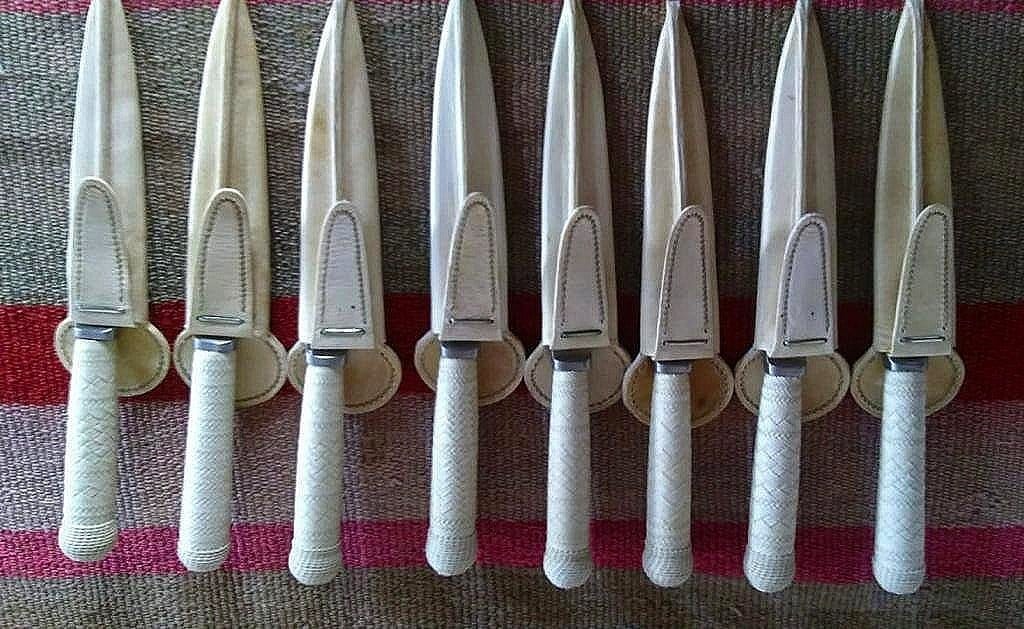In the heart of Argentina’s vibrant Gaucho culture and storied history, the Gaucho knife stands as a symbol of tradition, resilience, and artistry. These knives, more than mere tools, embody the spirit of the Gauchos – the legendary horsemen and nomadic farmers of the Argentine Pampas. For centuries, the Gaucho knife has been an indispensable companion in the daily life of these rugged individuals, playing a pivotal role in their work, social rituals, and even in their attire. The design of these knives, marked by both functionality and beauty, reflects the unique blend of indigenous and European influences that shape Argentine heritage.
At Pieces of Argentina, we take pride in offering a collection of Gaucho knives that are not just artifacts but are living pieces of this rich tradition. Each knife in our collection is a testament to the unwavering commitment to authenticity and craftsmanship. Crafted by skilled artisans, these knives carry the legacy of the Gaucho spirit, marrying the ruggedness required for the Pampas lifestyle with the elegance fitting of a cultural icon. As we embark on the journey from forge to finish, let us explore the meticulous process of creating these exceptional pieces, understanding how each knife is not just a tool but a narrative of Argentine history, craftsmanship, and identity.
THE HISTORICAL SIGNIFICANCE OF THE GAUCHO KNIFE
THE GAUCHO KNIFE IN ARGENTINE HISTORY AND CULTURE
The story of the Gaucho knife, or “cuchillo,” is deeply intertwined with the history of Argentina itself. Originating in the early 19th century, these knives were more than mere tools; they were integral to the survival and culture of the Gauchos. In the vast, open Pampas where resources were scarce and the environment challenging, the Gaucho knife emerged as a versatile and reliable companion. It was used for a myriad of tasks – from the mundane chores of cutting leather and rope to the more vital roles in hunting, preparing food, and as a weapon for protection.
Over time, the Gaucho knife evolved beyond its utilitarian purposes, becoming a key cultural symbol. It began to embody the values and identity of the Gaucho – bravery, independence, and a deep connection with the land. The knives also became a canvas for artistic expression, with intricate designs that reflected the individuality of their owners and their regional heritage. In many ways, these knives became as much a part of the Gaucho’s identity as their iconic ponchos and wide-brimmed hats.
SYMBOLIC IMPORTANCE IN GAUCHO LIFE
The symbolic significance of the Gaucho knife transcended its practical use. It was a mark of a man’s coming of age, often gifted as a rite of passage. The knife was not just a tool but a companion that shared in the joys and struggles of Gaucho life. It played a central role in social gatherings and celebrations, particularly in the ritual of Asado – the Argentine barbecue, where the knife was essential for preparing and serving meat.
Moreover, the Gaucho knife held a place of honor in the realm of folklore and literature, often featured in tales of bravery and adventure. It symbolized the rugged, nomadic lifestyle of the Gauchos, and their enduring spirit of freedom. The knife was, and still is, a cherished heirloom, passed down through generations, each wear and mark on its blade telling a story of the past.
In the hands of a Gaucho, the knife was not just a tool but a testament to a way of life that has been pivotal in shaping the Argentine identity. As we explore the journey of how these remarkable knives are made, we come to appreciate not just their craftsmanship but also their profound cultural legacy.



